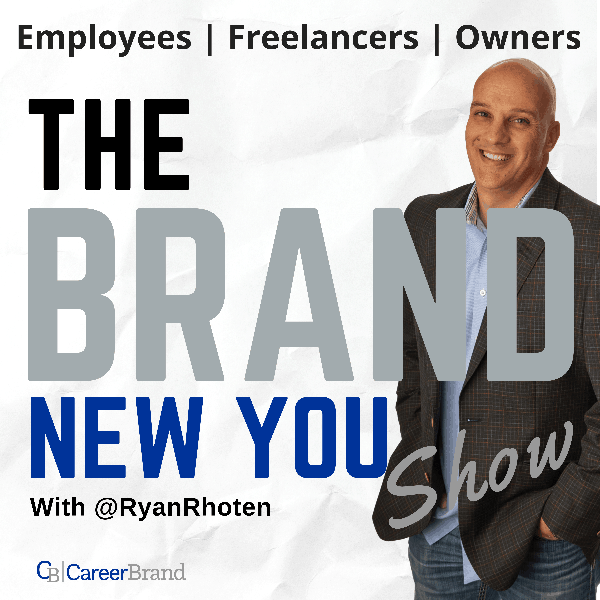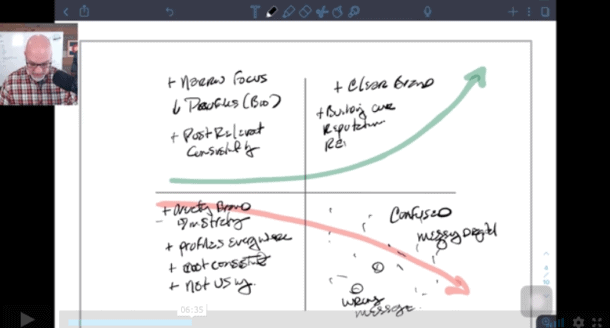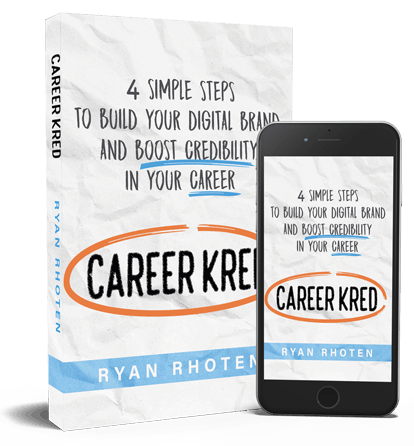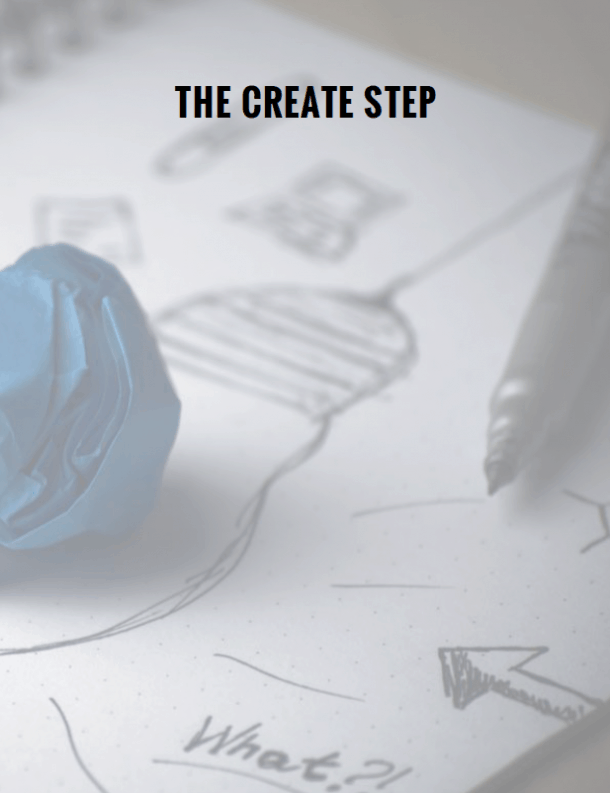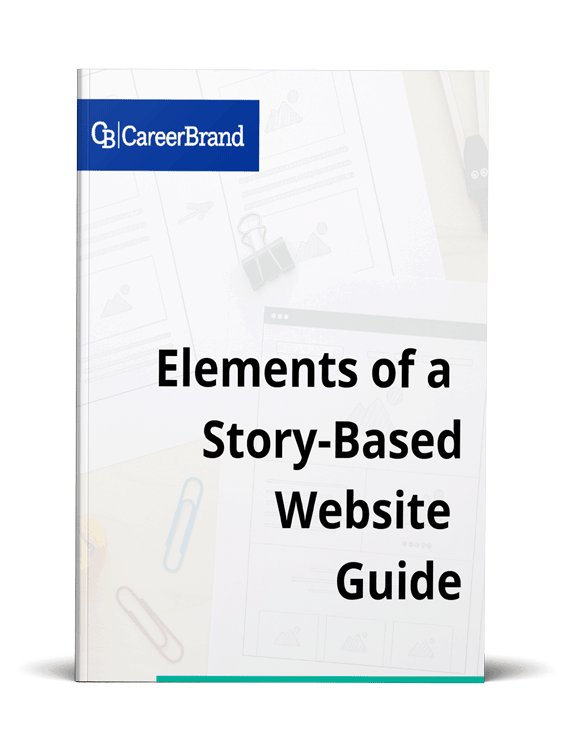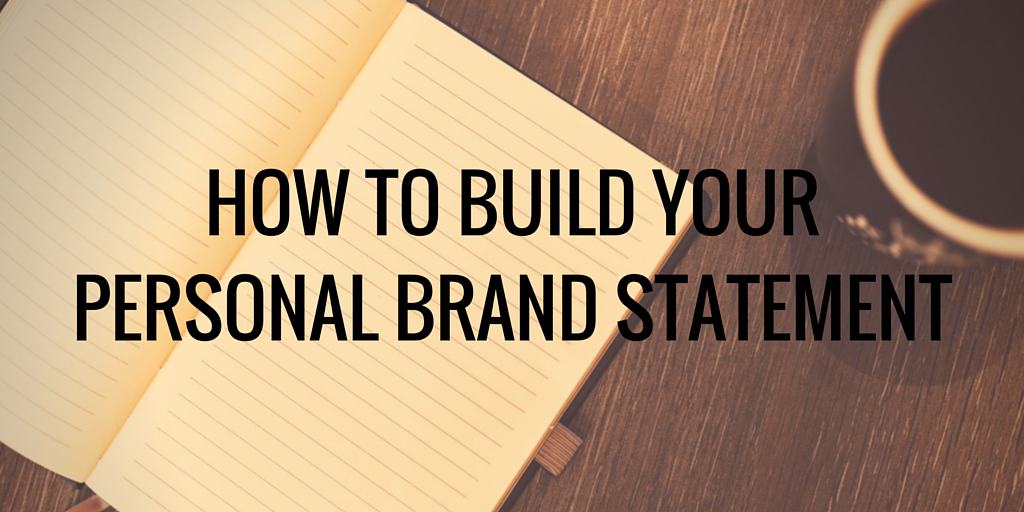
Throughout the month of June on the Build Your Own Brand episodes of the BRAND New You show podcast, all of the episodes were dedicated to helping you with the Discover step in the DICE process.
Specifically, how to become more self-aware by discovering your brand through self-reflection so you can uncover your natural preferences, your strengths, and in essence who you are at your core.
I recommended three assessments in these podcasts and a free worksheet you can use to document your findings along the way. If you took any of the assessments and worked through the exercises in the worksheet, you would be very close to discovering what makes you, you.
WHAT IS A PERSONAL BRANDING STATEMENT?
First off, the personal branding statement goes by many names. I’m sure you’ve heard more than a few, a tagline, a slogan, an anthem, or a statement to name a few. Before we get started, I’ll apologize now if I use the terms tagline and statement interchangeably, they are all the same thing.
Regardless of what you call it your personal brand statement, at a high level, provides a way for you to succinctly summarize who you are and how you add value. It can also provide you with a creative way for you to be remembered.
Your branding statement should say something profound, it should be easy to remember and it needs to place your brand front and center.
It will help you leave behind “a piece of you” after you meet someone, something that makes them remember you after you’ve left the building. A carefully crafted tagline should tell people who you are, and what you are all about.
In the world according to google a tagline is:
“a catchphrase or slogan, especially as used in advertising.”
Since I believe personal branding is the intentional act of telling the world who you are and how you add value, I agree your tagline is a very basic form of advertising.
For fun, I looked up slogan as well. Turns out a slogan is:
“a short and striking or memorable phrase used in advertising”
So your personal brand statement is a short and striking, memorable phrase that advertises to your audience, who you are and how you add value.
Which begs the question, why on earth would you want a tagline for your brand anyway?
WHY DO YOU NEED A PERSONAL BRANDING STATEMENT?
Does a personal tagline or brand statement seem silly to you? It did to me too at first.
Then I decided to take a step back and ask myself if I had a personal brand statement when in the last year would I have used it to tell others who I am and how I add value?
Here are a few possibilities I came up with that may resonate with you.
- During introductions at conferences
- Introductions at networking events
- Anytime someone asked me “what do you do?”
- And of course, anytime I was asked to “Tell me about yourself”
In addition to being a quick concise way to communicate who you are and how you add value, I believe a tagline or slogan can also be a big confidence booster for you.
Think about the last time you had to tell others about yourself. How did you answer? Did you fumble over your words? Did you use your job title in your introduction? Whatever approach you used, I’m guessing you quickly fizzled out and may have even fumbled with the words.
I’d also guess people didn’t remember what you said, five minutes later.
Having a personal brand statement will not only provide you with a conversation starter but if done correctly it can instill a lot of confidence in your answer, which will be “felt” by the people who hear it.
Trust me, when you have a concise answer to the question “What do you do”, you will become more memorable in the eyes of others.
HOW TO USE THE PERSONAL BRANDING STATEMENT WORKSHEET
So how do put this personal brand statement thing together? Well, as I mentioned at the beginning, if you’ve been following the podcast for the last few weeks, you've taken the assessments and you’ve downloaded the worksheet, believe it or not, you are much closer than you think.
For those of you who haven’t yet listened to the other shows or downloaded the strengths worksheet, you'll need to put your visualization skills to work for the rest of this post.
To build your personal brand statement, it will help to think about the process as a big funnel. Going through the exercises and using the worksheet to capture your findings, you already have a lot of inputs.
All of these inputs, we’ll pour into the top of our funnel.
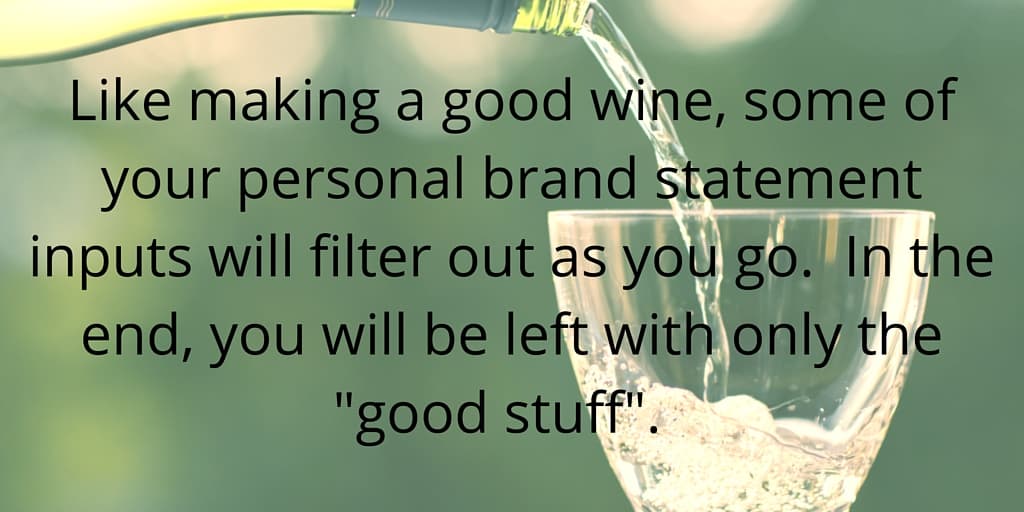
THE QUESTION YOU NEED TO ANSWER
Our goal is to start with as much information about you as we can and filter it all down into a concise phrase. Your personal brand statement will take the shape of one complete sentence answering the following.
- I am – Who you are, the title you give yourself.
- I help – Who do you add value to? This is your audience.
- Understand/do – How you add value to your audience
- So that – The type of transformation your audience should expect to receive.
On the first page of the personal brand statement worksheet, you’ll list out all of the “data points” you’ve collected about yourself during the Discover step.
These data points include your values, your skills, your traits, the phrases from your trusted advisors, and of course the final phrases from your strengths assessment worksheet.
Typically, you will use your skills and traits as adjectives in your personal brand statement and you will use your values as a double-check of sorts against your final tagline.
To get started, fill out your top five values, skills, and traits from your previous worksheets. Yes, this is a little redundant but I have found writing these things down again, will help you remember why you selected them in the first place. This is especially true if some time has passed since you last visited these sheets.
Next, write out the phrases you identified at the end of the strengths assessment worksheet as well as the top phrases from your trusted advisors.
With page one of the Personal Brand Statement worksheet complete, the real fun begins as you start to combine all of these phrases into one comprehensive statement.
NARROWING DOWN YOUR PERSONAL BRAND STATEMENT
Now that you have your list of phrases, skills, traits, and values that best describe you, you will take a stab at creating the first draft of your personal brand statement.
Before you write anything down, look for commonalities between the phrases you’ve identified. If you notice similar phrases or commonalities, combine them into one phrase or sentence.
Your goal with the first draft is to narrow down everything from the first page into something more manageable. If you have 20 sentences, for example, your goal should be to cut them down to ten, without losing the gist of all 20 sentences.
You will repeat this a second and possibly even a third time. If you need more space than provided on the worksheet, just flip the sheet over and repeat on the back.
YOUR PERSONAL BRAND STATEMENT
By the time you’ve narrowed down your personal brand statement three times, you’re probably thinking to yourself, I can’t narrow this down anymore. From experience at this point, I’m guessing you probably have between 3 and 5 sentences now, which is good, but it’s probably also a lot to take in and remember.
So we need to go deeper. Our goal is to get to one sentence. Remember, your one-sentence should include who you are, who you help, what you help those people understand or do so that they can experience some type of transformational change.
So as you write this statement, think about it in this order.
- I am
- I help
- Understand/do
- So that
I AM
For the I AM portion, think about what it is you are known for or want to be known for (BTW – see how all of this stuff ties together).
Do you want to be known as a personal branding specialist, a podcast editor, or a speaker program manager? Whatever your thing is, this is the I AM part of your statement.
I HELP
Next up is I HELP. We talked a few times now about what you want to be known for which is important for many reasons, especially as we move into the rest of the DICE process, but for the purpose of creating your personal brand statement, you must know who it is you help.
Sticking with the previous examples you might be a personal branding specialist who helps Millennials, Gen Xers, Baby Boomers, etc. As a podcast editor, it seems natural that you would help your fellow podcasters and as a speaker program manager, you most likely help organizations or individuals.
UNDERSTAND/DO
The third part of your personal branding statement is where the excitement starts to begin. This is where you tell your audience, those people you just identified you help, what exactly it is you help them with, what they need to understand or do.
As a personal brand specialist, you might only help Gen Xers define and build their brand. A podcast editor most likely collects audio files, edits them, and uploads them to a hosting service for their audience. A speaker program manager may help organizations find and books speakers for their upcoming events.
SO THAT
The final part of your personal brand statement is the most important. But it's not for you.
The part of this statement is aimed directly at your audience.
It’s the benefit they receive from working with you, the transformation you want them to experience.
In your day job, say you are a project manager. The transformation you seek may be the launch of a new product line or maybe even the completion of a housing complex. The transformation depends completely on what you want to be known for, who you help, and what you want them to understand or do.
Whatever the transformation is, it’s important to remember the outcome is aimed at them, not at you.
For example, as a personal brand specialist, you may want your audience to find more fulfilling work or become more visible online so they are more readily found and recognized by recruiters and hiring managers as the expert in their niche.
As a podcast editor, you help your fellow podcasters free up their time and resources to work on producing additional content or news shows.
A speaker program manager may want to help organizations gain a reputation for putting on the best conferences with the best speakers.
Do you see how the SO THAT portion of your personal branding statement can draw in your targeted audience?
How it can make them more intrigued by what you do which will lead to additional questions and the opportunity to further explain how you can help them.
DOES YOUR PERSONAL BRAND STATEMENT FIT
It might take you a while to work through your personal brand statement, it usually does. Once you have what you believe is your finished product, read it out loud. As a sniff test, ask yourself the following questions.
Do you think it accurately describes you and how you add value?
Can you say it with confidence?
Can you give examples of times when you’ve put your tagline to work?
If you’ve answered yes, congratulations. You’ve just created your personal brand statement.
If you’re not quite there yet, go ahead and tweak it. But remember, the more you think about it, the harder it will be for you to come to an acceptable resolution.
If you are stuck, bring in a friend to help. Read your personal brand statement to them and ask for their input. I’ve always found asking for the opinions of others to be helpful. That’s why I’m a big fan of masterminds.
If you’ve got your statement down and looking for another challenge, try to narrow your tagline down to 3 words. How’s that for a challenge.

